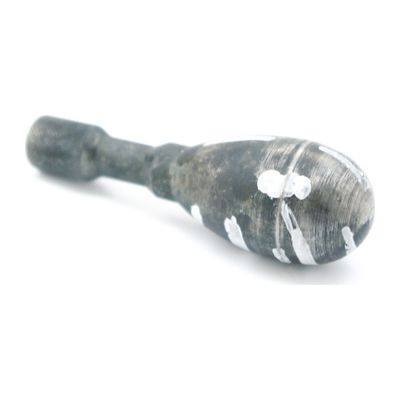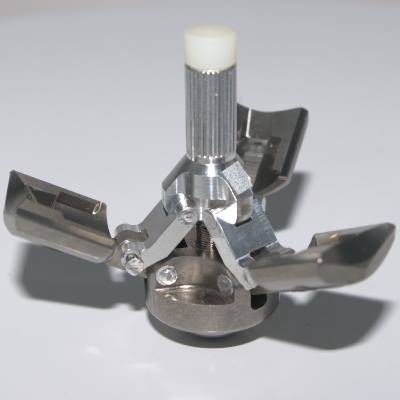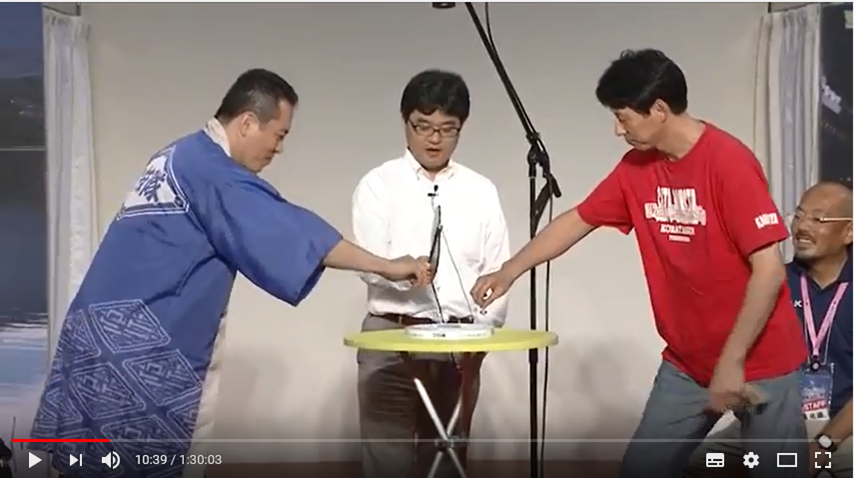とある夕方、向かった先は横浜八景島近くの株式会社ミナロ。「全日本製造業コマ大戦」を主催するNPO理事長も務める緑川賢司社長のお話を伺うためです。

緑川社長
全国の中小製造業、いわゆる町工場が自作のコマを持ち寄ってベーゴマ方式(1対1)で戦うこの大会。テレビなどでも話題になっているのでご存じの方もいらっしゃるでしょう。
直径2センチ、高さ6センチ以下のコマが直径25センチの土俵で長く回り続けたら勝ちというルール。第1回グランプリこそオーソドックスなコマが優勝したのですが、回を重ねるたびに「事件」が起きます。ほとんど横回転になって相手を土俵外に吹っ飛ばす「ぶっ飛ばし君」。回転すると羽根が開いて敵の回転軸を妨害する「ねこパンチ」。モーターを使って回りり続ける「天下布武」に至っては、もはやそれがコマなのかどうか。参加各社が知恵を絞り、ルールの網をくぐり、相手の出方を読む対決はアイデアにあふれていて見応え十分です。

ぶっ飛ばし君

ねこパンチ

画像をクリックするとYouTubeで動画が閲覧できます
先月1カ月だけでも全国で8大会が実施されるほど手のかかるコマ大戦の運営を、なぜやり続けるのか。「日本の製造業を元気にしたい」というビジョンはもちろんですが、緑川さんの課題意識はもっと明確でした。
「日本にインパナトーレを育てたいんです」
日本と同様に中小企業が多いイタリアの繊維業界。そこでは「インパナトーレ(Impannatore)」と呼ばれる人々が活躍しているそうです。かつてはただの「御用聞き」でしたが、時代とともに「あの人はこれを欲しがっているよ」「こういうモノをつくった方がイイよ」という情報を流通させる機能を身に付け、今では地方の中小企業と世界中の市場をつないでいます。
「最近ちょっと自信を失っているけれど、日本の町工場はとてつもなくレベルが高い。ただ長年、大企業の下請けをやってきて、情報収集力が弱いのも確か。日本中の町工場が一丸となって素晴らしい技術や商品を世界に発信するためにも、日本版インパナトーレを育てたいんです」
なるほど「コマ大戦」は、そこに参加して楽しむこと、あるいは町工場の存在を一般にアピールすることだけが目的ではないのです。日頃つながることのない町工場同士が知り合い、連携する機会をつくるという大目的があることを初めて知りました。
そして、そういう町工場のネットワークづくりと並行して、緑川さんはコンサルタントや専門商社の方々と一緒に世界の市場動向に詳しいチームを始動させました。すでに、たとえばドバイを通じて世界の超富裕層にチャレンジしています。

「日本の製造業を元気にしたい」というビジョンをただの美辞麗句とせず、それと真剣に向き合ったからこそ、「情報収集力が弱い」という課題が見え、「日本版インパナトーレ」というコンセプトが明確になったのでしょう。そしてそれを実現するための手段(具体策)としてコマ大戦を実施し、またアラブからの情報調達に取り組んでいます。コマ大戦が証明するように、日本の町工場は単に技術が高いだけでなく、実はアイデアも豊かです。日本版インパナトーレが機能すれば、製造業復活の日も遠くはなさそうです。
熱いお話を伺っているうちに喉も渇いたので、帰り道、さぁどこに寄り道しよう。かつて「小柴のシャコ」で名をはせたこのかいわいでうまい魚? いやいや、中華街で広東式の皮付き焼豚? いろいろ迷った揚げ句、たどり着いたのは「オッサンの聖地」野毛。会社の後輩、森本紘平さんと立ち食いフライや餃子のハシゴ酒です。
「広告会社のようなモノづくりの門外漢が『こういうモノをつくったら』という着想を得たとき、大企業に持って行っても門前払いされそうだけど、緑川さんたちと『とりあえずつくってみる』というアプローチはありそうですよね」
「あるある。面白くなってきたっ!!」
興奮のあまり飲み過ぎたのは、いつものことでした。
どうぞ、召し上がれ!











